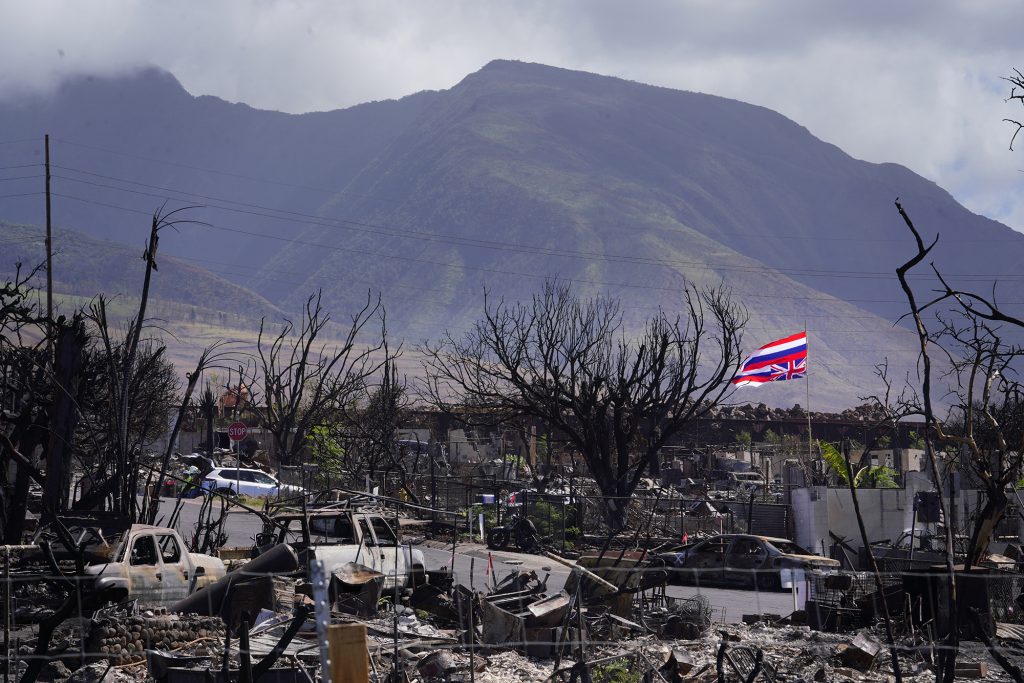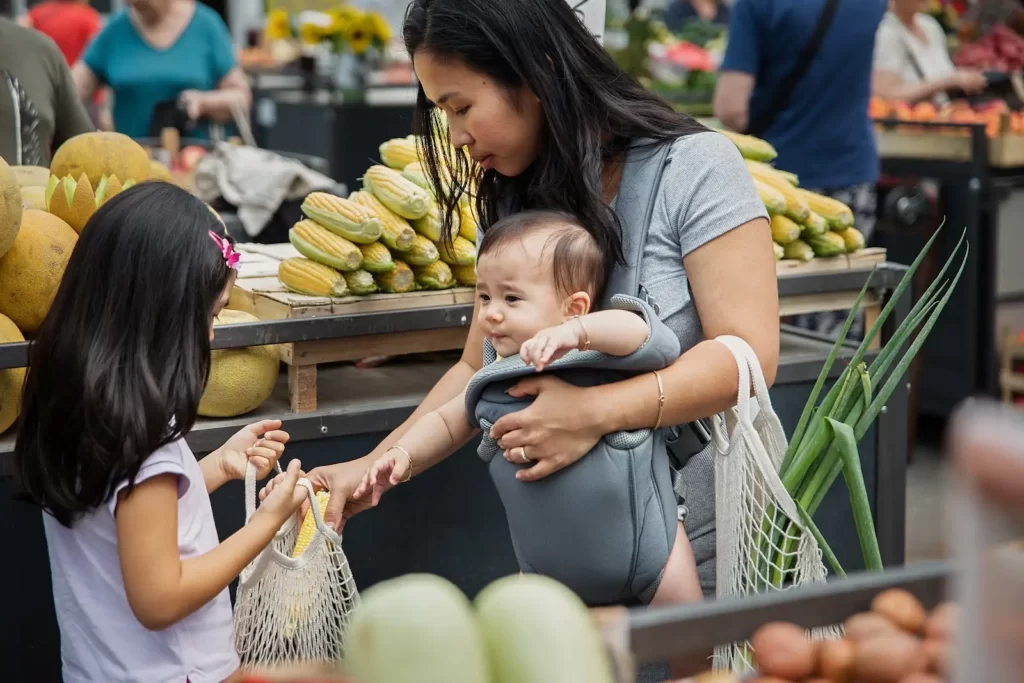Hawaiʻi economists have extended the forecast for a mild Hawaiʻi recession in a new report that underscores just how tightly bound the fate of the state’s tourism-dependent economy is to federal trade policy, including tariffs.
The University of Hawaiʻi Economic Research Organization cast a bleak picture of the next year in its forecast released Friday that declares every resident in the islands will feel the squeeze of rising consumer prices. Hawaiʻi’s lowest income households, including tourism workers and laid off federal government employees, are expected to be hit hardest.
The U.S. economy faced uncertainty over shifting trade policies and tariffs earlier this year, triggering Hawaiʻi visitor industry risks. But the economy was more or less still plugging along in May when UHERO analysts first predicted a mild recession for the Aloha State. What’s changed since then is that those same uncertainties and risks now bear out in U.S. jobs reports and consumer spending data.
UHERO produces quarterly economic forecasts. The most recent report published Friday takes into account the latest economic data and makes predictions for the next year ahead through September 2026.
In Hawaiʻi, tourism is taking a hit from tariffs and increasingly confrontational U.S. immigration enforcement. More than 1,200 federal layoffs have stalled local job growth. Inflation is set to accelerate as tariffs and inflation push prices higher on imported goods.
By 2026, the UHERO report predicts inflation will have hiked up typical household costs for Hawaiʻi residents by about $1,400 a year.
“It feels a little scarier,” UHERO’s executive director, Carl Bonham, said Thursday in a Zoom meeting with reporters ahead of the report’s release. “There’s just so much overwhelming uncertainty that is clearly impacting businesses, everything from farmers to manufacturers to retailers.”
Construction remains the state’s lone economic buoy, propped up by military contracts and major public projects. While rebuilding Maui will create construction jobs for years, Honolulu construction projects in the pipeline — Aloha Stadium, the downtown expansion of the Skyline rail in Honolulu — also are expected to require thousands of additional workers.
‘Quiet All Over’
It’s been a bumpy road for the state’s tourism-dependent economy.
This spring, a downturn in visitor spending followed gradual recovery from losses due to the deadly 2023 Maui wildfires that destroyed the island’s Lahaina tourism hub and delivered a blow to the industry. The latest drop-off in visitor spending has reversed some of those post-wildfire tourism gains.
 A signal of distress, the upside-down Hawaiʻi State flag flies above the ashes of a Lahaina neighborhood destroyed by the Aug. 8, 2023 fire. (Kevin Fujii/Civil Beat/2023)
A signal of distress, the upside-down Hawaiʻi State flag flies above the ashes of a Lahaina neighborhood destroyed by the Aug. 8, 2023 fire. (Kevin Fujii/Civil Beat/2023)
Visitor arrivals plummeted 8% between April and July, according to the UHERO report. International markets have shouldered the biggest losses as the demand for a Hawaiʻi vacation has weakened in lock step with the economies of the state’s key visitor markets. The number of Canadian visitors to Hawaiʻi this year is down 9%.
The state’s tourism-dependent economy will remain depressed for the next several quarters, according to the report, with recovery beginning only when the U.S. economy strengthens. Looking forward, Bonham said he expects the current industry slump will dig deeper and last longer than the post-Maui wildfire crash in 2023.
On Maui, there have been recent creative attempts to lure visitors back, including a partnership between the state, the county, the Hawaiʻi Tourism Authority and the Los Angeles Rams. In June the NFL team held a weeklong football camp in Wailuku that aimed to uplift a community still reeling from the fires while promoting travel to the island. Southern California is Maui’s most important market.
“You can’t be the mayor and not be concerned about your visitor industry,” Maui Mayor Richard Bissen said Tuesday during a meeting with Civil Beat editors and reporters. “It’s our No. 1 industry. And, of course, there are people that need to work. People need to work so they can provide for their families. So, yeah, it’s not something taken lightly.”
On Lānaʻi, a 140-square-mile island west of Maui, luxury tourism buttressed by a pair of Four Seasons resorts serves as the island’s sole economic engine. This summer, however, the island was noticeably quieter. Visitor arrivals on Lānaʻi were down 37.5% in June, according to data from the state Department of Business, Economic Development and Tourism.
Alberta de Jetley, who operates one of two taxi companies on the tiny island, said she typically makes an average of five or six daily trips between the airport, the ferry and the island’s two resorts. But recently she said she’s lucky if she books one or two rides a day — a discouraging two-thirds drop that’s caused her to question the merits of staying in business.
“We’re all doing the best under trying circumstances,” she said. “People who come to Lānaʻi absolutely love, love, love Lānaʻi so it’s really heartwarming that they want to come and really enjoy the experience. But lately it has just been quiet all over.”
‘Hidden Crisis’
Job losses and rising price tags for consumer goods are expected to strain Hawaiʻi’s safety net services. So are cuts to the federal Supplemental Nutrition Assistance Program and Medicaid. A mild recession, the UHERO report concludes, is imminent.
 On average, the Hawaiʻi Foodbank serves nearly 160,000 people a month — roughly the same level of demand the nonprofit faced at the height of the Covid pandemic. (Courtesy: Hawaiʻi Foodbank/2024)
On average, the Hawaiʻi Foodbank serves nearly 160,000 people a month — roughly the same level of demand the nonprofit faced at the height of the Covid pandemic. (Courtesy: Hawaiʻi Foodbank/2024)
Food banks are already bracing for impact. Roughly 30% of Hawaiʻi households face a risk of hunger in a state with some of the highest grocery prices in the nation.
Hawaiʻi Foodbank President Amy Miller said the need for food assistance is high and rising, with her organization providing food to about 160,000 people a month on Oʻahu and Kauaʻi. That’s about twice as many people as the state’s largest food bank served before the Covid pandemic.
The state’s three food banks this year lost $4 million to federal funding cuts. Now the agencies are anticipating cuts to SNAP and Medicaid, which Miller said stand to affect many of the same families that are already struggling.
“It’s like a hidden crisis,” Miller said. “We’re doing everything that we can to ensure that we can still meet the need, whether it’s raising new funds or stretching the dollars we have so that we don’t have to make compromises about the kinds of food we’re providing.”
“Hawaiʻi’s Changing Economy” is supported by a grant from the Hawaiʻi Community Foundation as part of its work to build equity for all through the CHANGE Framework.

Sign up for our FREE morning newsletter and face each day more informed.
Sign Up
Sorry. That’s an invalid e-mail.
Thanks! We’ll send you a confirmation e-mail shortly.

